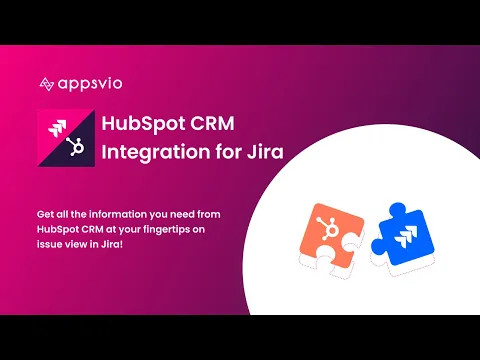
Introduction: The Power of Unified Systems
In today’s fast-paced business environment, efficiency is paramount. Companies are constantly seeking ways to streamline their operations, reduce redundancies, and boost overall productivity. One of the most effective strategies is integrating different software systems to create a cohesive workflow. Among the most impactful integrations is that of Customer Relationship Management (CRM) systems with project management tools like Jira. This article delves into the intricacies of CRM integration with Jira, exploring its benefits, implementation strategies, and best practices. We’ll uncover how this powerful combination can revolutionize your business processes, making your team more agile, responsive, and customer-centric.
Understanding CRM and Jira: Two Pillars of Modern Business
Before diving into the integration specifics, let’s establish a clear understanding of what CRM and Jira are and the roles they play in a business. CRM systems are designed to manage and analyze customer interactions and data throughout the customer lifecycle. They help businesses build stronger customer relationships, improve customer retention, and ultimately drive sales growth. Some popular CRM platforms include Salesforce, HubSpot, Zoho CRM, and Microsoft Dynamics 365. These systems typically track customer data, manage sales pipelines, automate marketing campaigns, and provide customer service support.
Jira, on the other hand, is a project management and issue tracking software developed by Atlassian. It’s widely used by software development teams, IT departments, and other teams that need to track tasks, manage projects, and collaborate effectively. Jira offers features such as issue tracking, agile project management (using Scrum or Kanban methodologies), workflow automation, and reporting. It helps teams plan, track, and release software and other projects efficiently. While Jira is often associated with software development, its versatility allows it to be used in various other business functions, including marketing, human resources, and operations.
The Benefits of CRM Integration with Jira
Integrating CRM with Jira offers a multitude of benefits that can significantly improve your business operations. Here are some of the key advantages:
- Improved Collaboration: Integration fosters seamless collaboration between sales, marketing, and customer service teams (typically managed by CRM) and development, IT, and other project-focused teams (typically managed by Jira). This ensures that everyone has access to the information they need, leading to better communication and fewer misunderstandings.
- Enhanced Customer Experience: By connecting customer data from your CRM with project details in Jira, you can provide a more personalized and responsive customer experience. For example, support tickets raised by customers can be automatically linked to their CRM records, giving your support team a complete view of the customer’s history and needs.
- Increased Efficiency: Automation is a major benefit. Integrating the two systems allows you to automate tasks and eliminate manual data entry. This frees up your team members to focus on more strategic activities. For example, when a new customer is added in your CRM, a corresponding project can be automatically created in Jira to onboard them.
- Better Data Visibility: The integration provides a consolidated view of customer and project data. You can easily track the progress of projects related to specific customers, identify potential issues, and make data-driven decisions.
- Streamlined Workflows: Integrating the two systems allows you to create streamlined workflows that automate processes and reduce manual effort. For example, you can automatically create Jira issues when a sales opportunity is won in your CRM, or automatically update CRM records when a project in Jira is completed.
- Reduced Errors: Automating data transfer reduces the risk of human error. This ensures that data is accurate and consistent across both systems.
- Improved Reporting and Analytics: With integrated data, you can generate more comprehensive reports and gain deeper insights into your business performance. You can track the impact of projects on customer satisfaction, sales, and other key metrics.
Implementing CRM Integration with Jira: A Step-by-Step Guide
Implementing CRM integration with Jira can seem daunting, but with a well-defined plan, it can be a straightforward process. Here’s a step-by-step guide to help you get started:
- Define Your Goals and Requirements: Before you begin, clearly define your integration goals. What do you want to achieve with the integration? What specific data needs to be shared between the two systems? Identify the key workflows you want to automate. This will help you choose the right integration method and configure the systems effectively.
- Choose an Integration Method: There are several methods for integrating CRM with Jira, including:
- Native Integrations: Some CRM and Jira platforms offer native integrations, which are pre-built connectors that simplify the integration process. These are often the easiest and most reliable option.
- Third-Party Integration Tools: Several third-party integration platforms, such as Zapier, Automate.io, and Workato, provide pre-built connectors and automation workflows that can integrate CRM and Jira. These tools offer flexibility and ease of use, even if you don’t have extensive technical skills.
- Custom Development: If you have specific requirements that aren’t met by native integrations or third-party tools, you can develop a custom integration using APIs (Application Programming Interfaces). This option provides the most flexibility but requires technical expertise.
- Select the Right Tools: Choose the CRM and Jira platforms that best suit your business needs. Consider factors such as features, pricing, scalability, and ease of use. Ensure that your chosen platforms offer integration options that meet your requirements.
- Configure the Integration: Follow the instructions provided by your chosen integration method to configure the connection between your CRM and Jira. This typically involves connecting your accounts, mapping data fields, and defining the workflows you want to automate.
- Test the Integration: Thoroughly test the integration to ensure that data is being transferred correctly and that workflows are working as expected. Create test cases to cover various scenarios and identify any potential issues.
- Deploy the Integration: Once you’re satisfied with the testing results, deploy the integration to your production environment. Monitor the integration closely after deployment to ensure that it continues to function correctly.
- Train Your Team: Provide training to your team members on how to use the integrated systems and how to access and utilize the shared data.
- Monitor and Optimize: Regularly monitor the integration to ensure that it’s performing optimally. Identify any areas for improvement and make adjustments as needed.
Best Practices for Successful CRM and Jira Integration
To maximize the benefits of your CRM and Jira integration, follow these best practices:
- Start Small: Begin by integrating a small set of data and workflows. This allows you to test the integration thoroughly and identify any potential issues before scaling up.
- Map Data Fields Carefully: Ensure that data fields are mapped correctly between your CRM and Jira. This is crucial for ensuring that data is transferred accurately.
- Define Clear Workflows: Clearly define the workflows you want to automate. This will help you configure the integration effectively and ensure that it meets your business needs.
- Automate Smartly: Don’t automate everything at once. Start with the most critical workflows and gradually add more automation as you gain experience.
- Maintain Data Quality: Ensure that data in both your CRM and Jira is accurate and up-to-date. This will improve the effectiveness of the integration.
- Provide Adequate Training: Train your team members on how to use the integrated systems and how to access and utilize the shared data. This will improve adoption and ensure that everyone is using the systems effectively.
- Monitor the Integration: Regularly monitor the integration to ensure that it’s performing optimally. Identify any areas for improvement and make adjustments as needed.
- Document Everything: Document your integration setup, including the integration method, data mappings, workflows, and any custom configurations. This will help you troubleshoot issues and maintain the integration over time.
- Prioritize Security: Implement appropriate security measures to protect sensitive customer and project data. This includes using secure connections, encrypting data, and restricting access to authorized users.
- Regularly Review and Update: Your business needs and the features of your CRM and Jira platforms will evolve. Regularly review your integration to ensure it still meets your needs and update it as necessary.
Specific Use Cases: Real-World Examples of CRM and Jira Integration
Let’s explore some specific use cases to illustrate the practical applications of CRM and Jira integration:
- Sales and Development Collaboration: When a sales team closes a deal in the CRM (e.g., Salesforce), a corresponding project is automatically created in Jira for the development team to begin working on the project. The CRM record and the Jira project are linked, allowing both teams to track progress and collaborate effectively.
- Customer Support and Development Alignment: When a customer submits a support ticket in the CRM (e.g., Zendesk), a related issue is automatically created in Jira for the development team to address the issue. The support team can track the status of the issue in Jira, and the development team can access the customer’s information from the CRM record.
- Marketing Campaign Tracking and Project Management: When a marketing campaign is launched in the CRM (e.g., HubSpot), a related project is created in Jira to track the campaign’s progress. The marketing team can monitor the campaign’s performance in the CRM, and the project team can manage the tasks related to the campaign in Jira.
- Onboarding New Customers: When a new customer is added to the CRM, a project is automatically created in Jira to onboard the customer. This project includes tasks such as setting up the customer’s account, providing training, and configuring the customer’s services.
- Managing Feature Requests: Customer feedback and feature requests submitted through the CRM can automatically create issues in Jira, allowing the development team to prioritize and track these requests.
Choosing the Right CRM and Jira Integration for Your Business
The best CRM and Jira integration solution depends on your specific business needs and technical capabilities. Here are some factors to consider when choosing an integration method:
- Your Technical Expertise: If you have limited technical expertise, a native integration or a third-party integration tool may be the best option. If you have a development team, you can consider custom development.
- Your Budget: Native integrations are often the most cost-effective option. Third-party integration tools typically offer flexible pricing plans. Custom development can be the most expensive option.
- Your Data Requirements: Consider the specific data you need to share between your CRM and Jira. Ensure that your chosen integration method supports the necessary data mappings.
- Your Workflow Requirements: Define the workflows you want to automate. Ensure that your chosen integration method supports the necessary automation capabilities.
- Scalability: Choose an integration method that can scale as your business grows.
Troubleshooting Common CRM and Jira Integration Issues
Even with the best planning, you may encounter issues when integrating CRM with Jira. Here are some common problems and how to address them:
- Data Synchronization Errors: These errors can occur if there are issues with data mapping, data formatting, or network connectivity. Check your data mappings, ensure that data formats are compatible, and verify your network connection.
- Workflow Automation Problems: If your workflows aren’t working as expected, check your automation rules and ensure that they are configured correctly. Test your workflows thoroughly.
- Performance Issues: If your integration is slowing down your systems, optimize your data mappings, reduce the frequency of data synchronization, and ensure that your systems have sufficient resources.
- Authentication Issues: If you’re having trouble connecting your CRM and Jira accounts, verify your login credentials and ensure that you have the necessary permissions.
- API Rate Limits: Some APIs have rate limits that restrict the number of requests you can make within a certain time period. If you’re exceeding these limits, optimize your data synchronization frequency or contact the platform provider to request an increase.
- Data Conflicts: When data is modified in both systems, conflicts can occur. Implement a strategy to handle conflicts, such as prioritizing data from one system or manually resolving conflicts.
The Future of CRM and Jira Integration
The integration of CRM and Jira is constantly evolving. As technology advances, we can expect to see even more sophisticated integrations with enhanced features and capabilities. Some potential future trends include:
- AI-Powered Integrations: Artificial intelligence (AI) and machine learning (ML) can be used to automate more complex tasks, such as predicting customer behavior and optimizing project workflows.
- Enhanced Analytics and Reporting: Integrations will provide even more comprehensive reporting and analytics capabilities, allowing businesses to gain deeper insights into their performance.
- Greater Automation: We can expect to see more automation capabilities, allowing businesses to streamline their operations and reduce manual effort.
- Improved User Experience: Integrations will become more user-friendly, with intuitive interfaces and simplified workflows.
- Integration with Other Tools: CRM and Jira will integrate with other business tools, such as marketing automation platforms, communication tools, and finance systems, creating a more comprehensive ecosystem.
Conclusion: Unleashing the Power of Integration
CRM and Jira integration is a powerful strategy for enhancing productivity, improving customer experience, and driving business growth. By following the steps outlined in this article, you can successfully implement this integration and unlock its full potential. Remember to define your goals, choose the right integration method, and follow best practices. Embrace the benefits of a unified system, and watch your business thrive in today’s competitive landscape.
By combining the customer-centric focus of CRM with the project management capabilities of Jira, you can create a powerful synergy that transforms your business operations. The integration of these two platforms is no longer a luxury; it’s a necessity for businesses that want to stay ahead of the curve. Start your integration journey today and experience the transformative power of a streamlined workflow.

